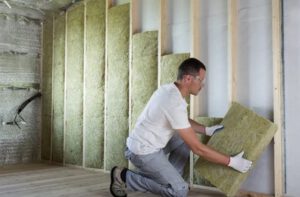Whether your home is cold or hot, residential Insulation can make the difference. While most insulation materials reduce airflow and temperature, some are more efficient than others. Some of the most effective types of residential insulation contain high levels of chemical components and are more expensive to install. Listed below are some of the best types of insulation for your home. Before you decide which type to use, read up on the benefits of each material. We hope you find them helpful.
Fiberglass insulation is an affordable, environmentally friendly way to insulate your home. This insulation material has an R-value of 60 and is widely available. Because it won’t lose its energy-saving ability over time, you don’t have to worry about adding additional fire-retardant material or re-insulating your house every few years. However, don’t forget that it’s essential to select a high-quality residential insulation material, as these can last up to 30 years or more.
Residential insulation is a critical part of a highly energy-efficient home. It can reduce utility bills by up to 20% when properly installed. The best type of insulation for your home is the right combination of the suitable materials, which will combat moisture transfer and airflow. There are five types of home insulation available, and they all have different characteristics. Make sure to read the Fact Sheet on Residential Insulation before beginning any project. This will give you a better idea of what to expect.
Another type of residential insulation is foam. While this type is more expensive than bat insulation, it has higher R-values and is easier to handle. If you’re planning to install the insulation yourself, foam boards are a good option. Just make sure you choose a qualified installer. A budget calculator is a useful tool for figuring out the estimated cost of your insulation project. It also helps you estimate whether you can afford to purchase the right type of insulation for your home.
While R-value is the most common measure of insulating power for a given material, it’s not the only factor to consider. Many types of insulation have different R-values and different spots in the home can have different R-values. It’s important to remember that the amount of R-value required for energy efficiency varies by climate and temperature, as well as the material. If you’re unsure of the level of R-value needed for your insulation project, consult the ENERGY STAR for guidance.
Loose-fill insulation is a relatively inexpensive choice. This type of insulation is made from finely shredded newspaper. This type of insulation is blown into the space using special equipment. The best part about this type of insulation is its low cost. Generally, you’ll spend around $0.04 per R-value per square foot installed. And it’s also effective for sealing air leaks, especially in unusually shaped areas.
When installing residential insulation, be sure to follow manufacturer’s recommendations regarding thickness and R-value. These are important factors to ensure maximum thermal performance. Some types of insulation are easy to install yourself, while others require professional installation. Be sure to ask for several written cost estimates before hiring a contractor to install your insulation. Ask each contractor how long they’ve been installing insulation before. And remember: residential insulation is a major investment, so choose a high-quality contractor to ensure it’s installed correctly.
For wall and floor insulation, there are two types of insulation to consider. One type is made of closed-cell polyurethane foam and is a great choice for both walls and floors. Its thickness can go as high as 3.5 inches and serves as an air barrier. The material also helps regulate moisture and is resistant to fungus and mold. You’ll be saving money and the environment. And you can use this type of insulation for commercial projects, too.
If you’re in the market for residential insulation, you may be wondering what type is best for your home. There are many different types of insulation to choose from, and the right one depends on your needs, your home’s location, and how much money you’re willing to spend. Many types of insulation are budget-friendly and can be installed by yourself. If you don’t have the tools, you can always rent a set of insulation tools.
Another type of residential insulation is called reflective insulation. It contains aluminum foil over kraft paper or foam board. This type is best for attics, where most heat travels. It also prevents water vapor from penetrating the walls or ceilings. Any moisture in either direction can reduce the R-value of the insulation and cause mold to form. Reflective insulation is ideal for homes in humid climates and in buildings with wood or masonry walls.
